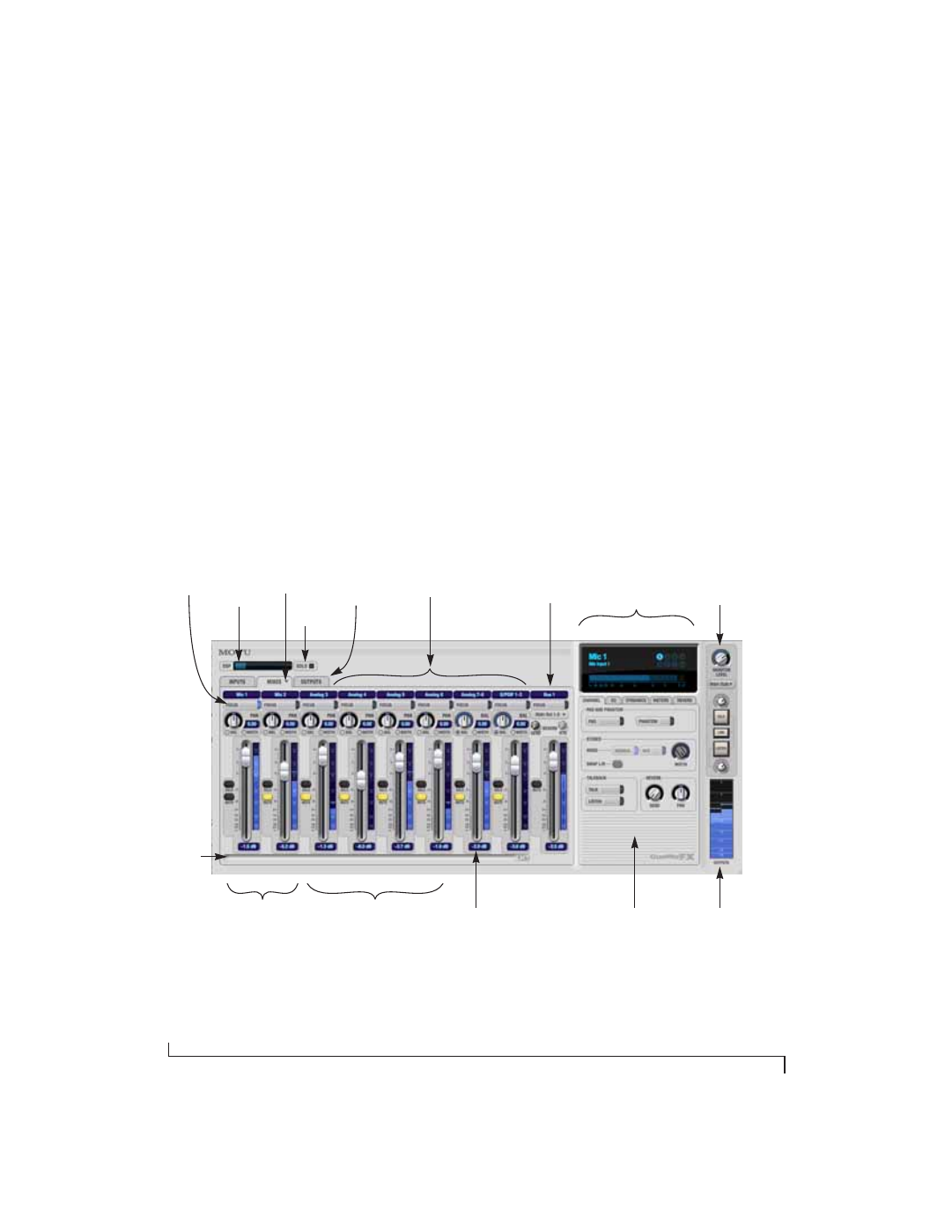Advantages over host-based mixing and processing, Cuemix fx installation – MOTU UltraLite-mk3 - Hybrid FireWire/USB 2.0 Audio & MIDI Interface User Manual
Page 62

C U E M I X F X
62
Each input, output and mix bus provides a send to
the Classic Reverb processor, which then feeds
reverb returns to mix busses and outputs, with a
selectable split point between them to prevent
send/return feedback loops.
ADVANTAGES OVER HOST-BASED MIXING
AND PROCESSING
CueMix FX provides several major advantages over
mixing and processing in your host audio software:
■
CueMix has no buffer latency. Thanks to the
UltraLite-mk3’s DSP chip, CueMix provides the
same throughput performance as a digital mixer.
■
CueMix mixing and effects processing imposes
no processor drain on the computer’s CPU.
■
CueMix routing can be maintained
independently of individual software applications
or projects.
■
CueMix routing can operate without the
computer, allowing the UltraLite-mk3 to operate as
a portable, stand-alone mixer with effects.
CUEMIX FX INSTALLATION
CueMix FX
is installed with the rest of your
UltraLite-mk3 software.
Figure 10-1: CueMix FX is a virtual mixer that gives you control over the UltraLite-mk3’s on-board mixing features.
Tabs for inputs,
mix busses and
outputs
DSP
resources
meter
UltraLite-mk3
inputs
Mix bus
master
fader
Tabs for channel strip settings,
including EQ and dynamics, as
well as global settings such as
the meter bridge and reverb
processor.
Monitoring/
talkback
section
Monitor
group
metering
Mic inputs
Inputs split
into mono
channels
Inputs grouped as
stereo pairs
Mix bus
menu
Channel
settings
Channel
focus
Channel
scroll
bar
Solo
light